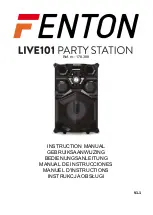
VGEM000-GB192
Pag. 12/68
VGE International B.V.
●
Ekkersrijt 4304
●
5692 DH Son Netherlands
●
+31 499 461099
●
●
www.vgebv.nl
Installation & User Manual
1.6 UV disinfection
For non-chemical disinfection of liquids, disinfection with UV-C radiation is a proven and reliable technology
that has been used since the beginning of the 20th century. From around the middle of the 20th century, the
application of UV disinfection on liquids has seen a sharp increase because it then became possible to
produce good quality UV-C lamps on a large scale. The discovery of the by-products produced by chemical
disinfection of water also led to a strong growth in the demand for UV-C radiation for the disinfection of
(drinking) water.
UV radiation (see also the section on optical radiation) can be divided into four main categories: UV-A, UV-
B, UV-C and vacuum UV. The UV-C spectrum (wavelength range of 200 to 280 nanometre) is the most
effective range for controlling microorganisms. UV-C radiation is capable of causing permanent damage to
microorganisms. Each type of microorganism requires a certain amount of UV-C energy (UV fluence, also
known as the UV dose) for the disinfection process to be successful. The microorganisms must be directly
and long enough exposed to UV-C radiation, so that the radiation can penetrate the cell wall of the
microorganism to damage the DNA (deoxyribonucleic acid).
Depending on the intensity of the UV-C radiation, it only takes a short time (in some cases a fraction of a
second) to penetrate the cell wall, irreparably damage the DNA and inactivate the microorganisms in the
water . This causes the reproductive mechanism of the microorganisms to be damaged and in some cases
even killed.
UV-C disinfection is a non-selective process, as is the case with certain chemical disinfection processes.
UV-C disinfection can be used against bacteria, viruses, fungi, yeasts, algae and (chlorine-resistant)
protozoa.













































